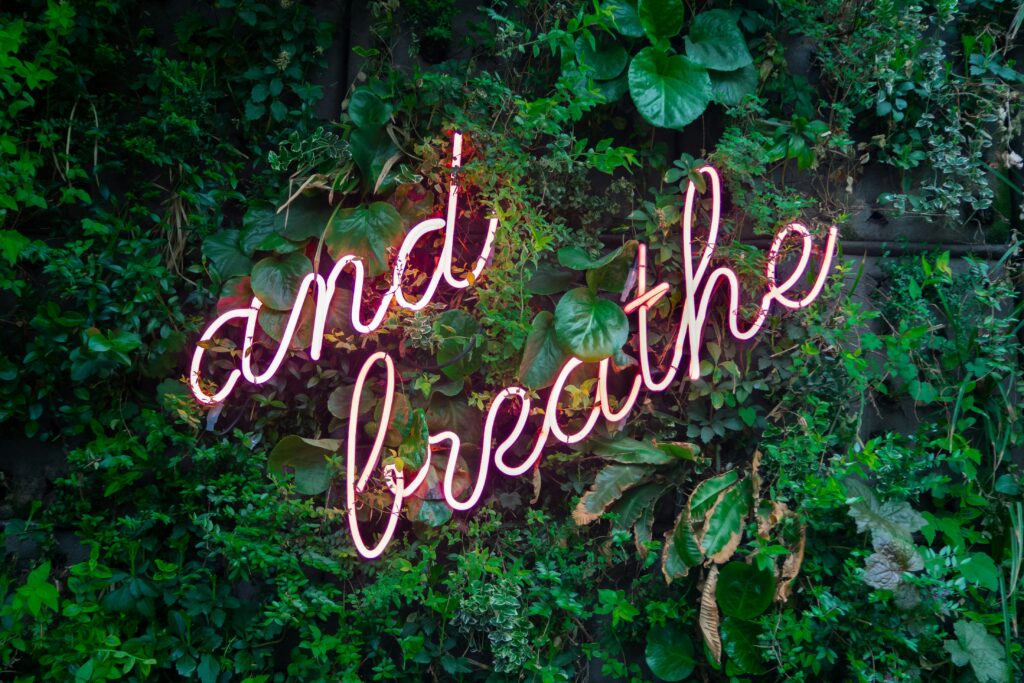1. The Moment Panic Begins
It often starts quietly, almost imperceptibly.
A sudden tightening in the chest, a rush of heat, a wave of dread that seems to come out of nowhere. Your vision narrows, your heart races, and your thoughts begin to scatter.
In those moments, your body is trying to protect you. It doesn’t realize that you’re not actually in danger. This is the strange trick of panic. It convinces the body that something terrible is happening right now, even when you’re safe.
The most instinctive reaction is to escape. To leave the room. To run from what feels unbearable. But if you leave too soon, panic learns that it is stronger than you are. It begins to take control.
So, unless you are truly unsafe, stay.
Stay with yourself. Let the wave rise and fall. You are capable of meeting it. You have before. Every time you stay, you teach your nervous system that it can handle more than it thinks.
2. Breathe Like Your Life Depends on It (Because It Does)

When panic takes hold, your breath often becomes shallow and fast. You start to overbreathe. This reduces the amount of carbon dioxide in your blood, which makes your body feel even more alarmed. The cycle feeds itself.
To interrupt that spiral, you must slow everything down. Your breath becomes your anchor. Not a performance. Not a technique to get it “right.” Just a slow rhythm that tells your body, “We’re safe enough to stay.”
Try this for two minutes:
– Inhale for **four seconds.**
– Hold gently for **one and a half seconds.**
– Exhale for **eight seconds.**
– Hold again for **one and a half seconds.**
This creates what I call the fifteen-second breath. Two minutes of this rhythm begins to reset your system. The body starts to believe the message that you are not in danger. With each round, your heart steadies, your muscles soften, and your awareness returns.
3. Write It Down and See What’s True

Once your breath begins to settle, the mind may still be running. Thoughts often spin fast after panic. They whisper things like, “She won’t want me,” or “I’m not enough,” or “Something is wrong with me.”
Take a notebook or your phone and write these thoughts down exactly as they appear. Don’t edit them or try to make sense of them. Just get them out of your head and onto paper.
What you’re often meeting here are what I call *ANTs*, or Automatic Negative Thoughts. They multiply quickly. One small thought becomes ten. Ten become a hundred. They begin to swarm until you can hardly hear your own truth.
When you write them down, you create distance. You can look at them and ask, “Is this actually true?” Then you can correct them.
For example:
– **ANT:** “She won’t want me.”
– **Correction:** “I don’t know that. What I do know is that I’m learning to want myself first.”
This shift moves you from panic into presence. You stop believing every thought that appears and begin to meet each one with awareness.
4. Support and Strengthen Your System

Sometimes, even after grounding and breathing, the body still feels unsettled. That’s okay. Panic takes time to unwind.
You can support yourself with natural supplements such as L-Theanine, Magnesium, or GABA amino acid. These can help calm the nervous system both in the moment and over time. Think of them as supportive tools, not cures.
The deeper work is learning to bring yourself back to center through awareness and skill. Each time you practice, your body learns a new pattern. You begin to notice the early signs of dysregulation before panic fully takes over. You recover faster. You trust yourself more deeply.
This is how the Wolf within you learns to stay.
To breathe.
To trust the ground beneath its feet again.
Closing
A panic episode is not a failure. It is an invitation to return to what is already whole inside you. You are not broken. You are learning how to listen.
Every time you stay, every time you breathe, every time you write down the truth, you reclaim a piece of your power. You begin to dissolve panic not by fighting it, but by remembering who is in charge of your breath.
You are.
🌀 Integration Suggestion
After reading, take two minutes to practice the fifteen-second breath. Feel your feet on the floor and your shoulders drop slightly with each exhale. Then write one sentence that begins with, “Right now, I am safe enough to…” and let your body finish the rest.


